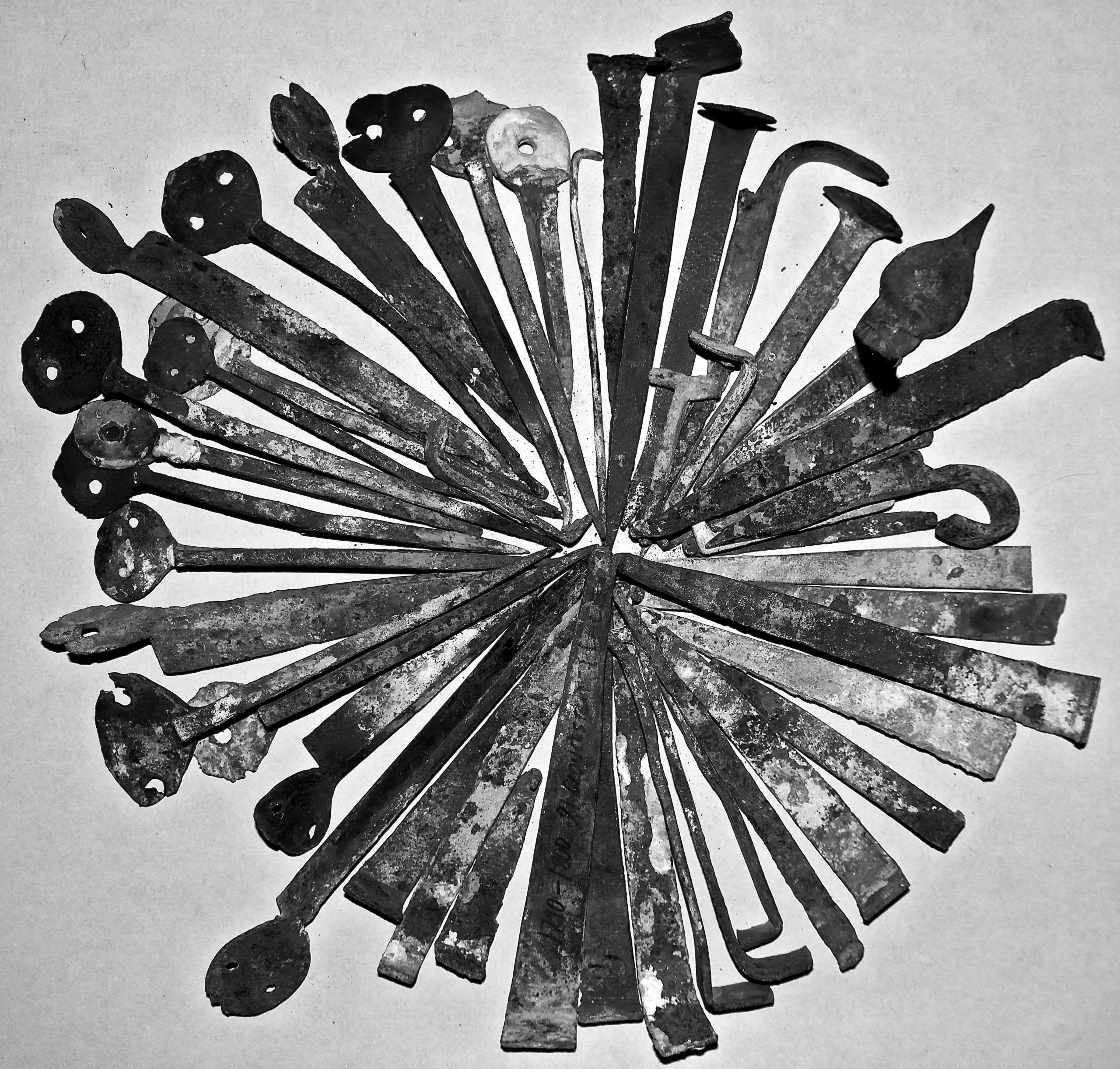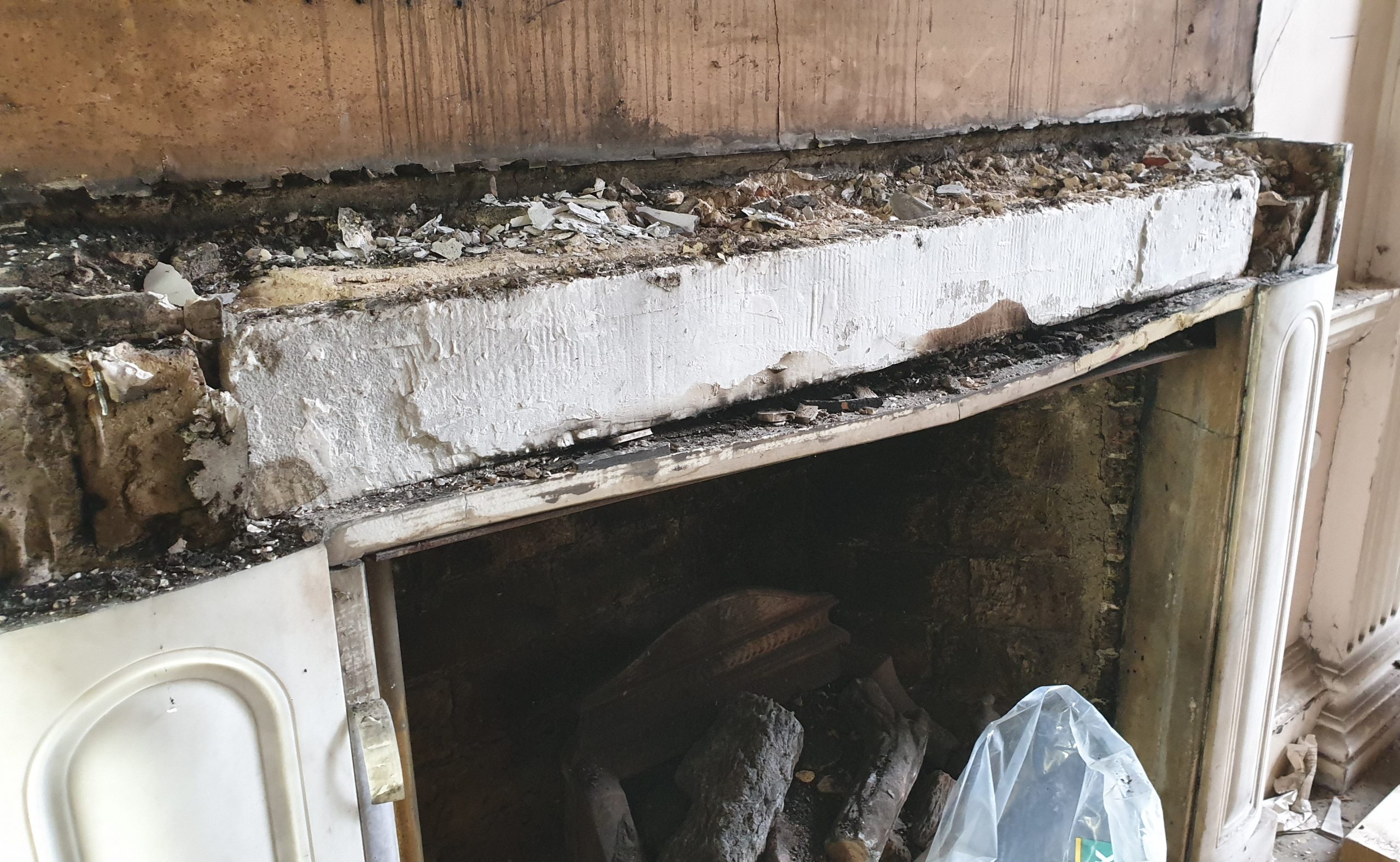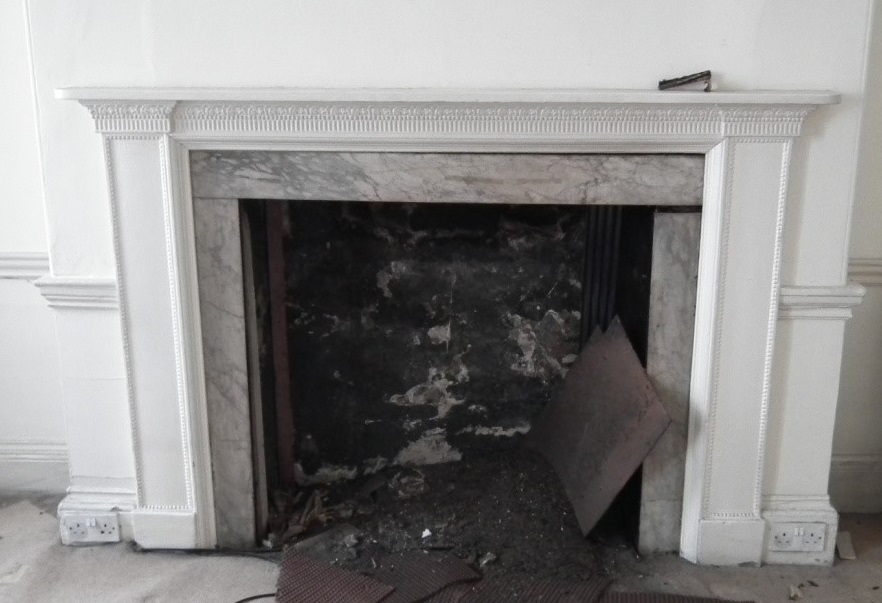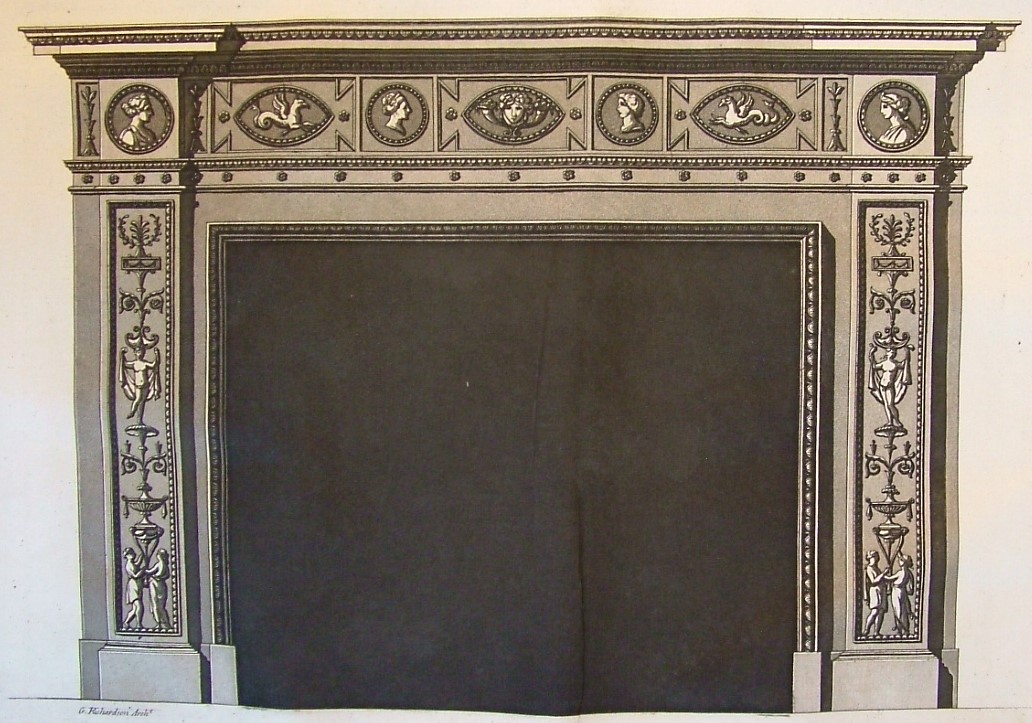
The restoration of 18th Century Chimney-pieces is our speciality
Commonly occurring damages
An overview of damage frequently found on Georgian Chimney-pieces
For the last three hundred years, Chimney-pieces were used to generate heat and light and were in use for most of the year. They were prone to damage from a variety of sources and also to alterations, many of which can now be seen to have been quite destructive.
Use the buttons below to see different types of damage.

Our approach to restoration
Preserve the original surface integrity
Our restoration processes focus on maintaining the original integrity as much as possible.
For example, historic damage, resulting from day-to-day wear and tear from the use of fire tools and fenders etc, we generally only clean in order to preserve as much of the history of the piece as possible.
Furthermore, where smoke staining has damaged the piece we can extract staining to reveal the original colour of the marble when first finished. This is predominately done with poultices or non-abrasive cleaning agents on careful a test-trial basis.
For any sculptural elements, which retain traces from the chisels used to originally cut the marble. We endeavour to retain these marks as it is vital to show the very nature of the tools that were used to create them. We have a similar approach to less sculptural elements as these can, in places, also retain the original polish, despite atmospheric effects.
Replacement marbles
Where there have been losses, or the marble has broken down and is beyond repair, replacement marble is required.
Over the last 40 years, we have collected an extensive range of marbles used during the period, which can be used for considered repair work.
Retaining as much of the original marble as possible is vital and where coloured plaster repairs are unlikely to withstand day-to-day wear and tear, matching pieces of marble are let into the historic marble. Such decisions are always considered and then effected in a manner similar to that which 18th Century masons would have been familiar with.
Clean with non-abrasive materials
Cleaning with non-abrasive agents is a vital part of our restoration process.
Each Chimney-piece is inspected and after test-trials, a means of cleaning with the least impact on the marble is settled upon.
Instead of re-polishing using abrasives which would remove material from the piece, we strive to clean without such intrusion to the surface of the historic marble. A recent report illustrating our processes is below.
Read a recent report to learn more about the different ways we clean.
Sensitive & historically accurate recarving
Over the centuries changes in taste have sometimes been responsible for the destruction of substantial areas of enriched (carved) elements.
Some of these are historic, such as in the early 19th Century when the ability to produce large mirrors, made lower chimney-pieces more fashionable.
To accord with this new ‘taste’ whole sections of freize and cornice were sometimes removed in their entirety. In some instances, we recommend that these are replaced, and following extensive archival research for related chimney-pieces, replacement elements can be re-carved. Full scale working drawings and relevant plaster casts are assembled, to achieve this. Replacement sections of marble are sourced to match the historic originals as best as possible and the new element then re-carved by hand.
Off-site restoration work
We very rarely restore Chimney-pieces on-site. This primarily due to the presence of coal, smoke and soot to the rear of historic Chimney-pieces.
We have established a good reputation for considered restoration work on historic chimney-pieces and often find that permission to remove these can be granted subject to planning permission and insurance.
Working off-site at our workshop allows us to focus on each Chimney-piece in a suitable environment. For example, we can ensure it’s structural integrity and thoroughly remove the deposits which have accumulated to the rear.
A research report from an early 19th Century London gaming room includes further detail.

Reinstallation practices
The logistics of installation work require a number of points to be taken into consideration.
Approptiate structural support for the fireplace opening
During the 18th Century, fireplace openings were constructed to suit the dimensions of the room and the position of the room within the house.
Although many chimney-breasts have additional supports set into the brickwork at some height above the fireplace opening, the brick arch and any chimney bar that form the top of the fireplace opening, needs checking for structural integrity.
Most 18th Century Chimney-pieces were designed so that the internal returns and soffit fitted back within the fireplace opening. Ensuring that the fireplace opening is in good condition and allows for the Chimney-piece to fit back in is a primary concern before any real work can begin.
Visit our terminology page for information on the terms used.
The extent that the slab projects into the room
From the 1720s, the extent that the slab projected into the room increased considerably.
The projection of the slab of a Chimney-piece was used to provide a fire-proof and light reflective surface onto which the light from the fire (burning in the stove grate) could reflect out into the room. The dimensions of these projections were, in the main entertaining rooms, one half of its total extent (width).
The slabs were fitted flush with the adjacent floorboards and sometimes a mitered timber border was inserted around the projection of the slab. These slabs provide depth and presence which accords with the architecture and design of the chimney-piece. Many modern building projects fail to comprehend the relevance of introducing an appropriately sized slab of the correct material and it is always our advice to consider this requirement at the very beginning of any project.
As above, more on our terminology page.




